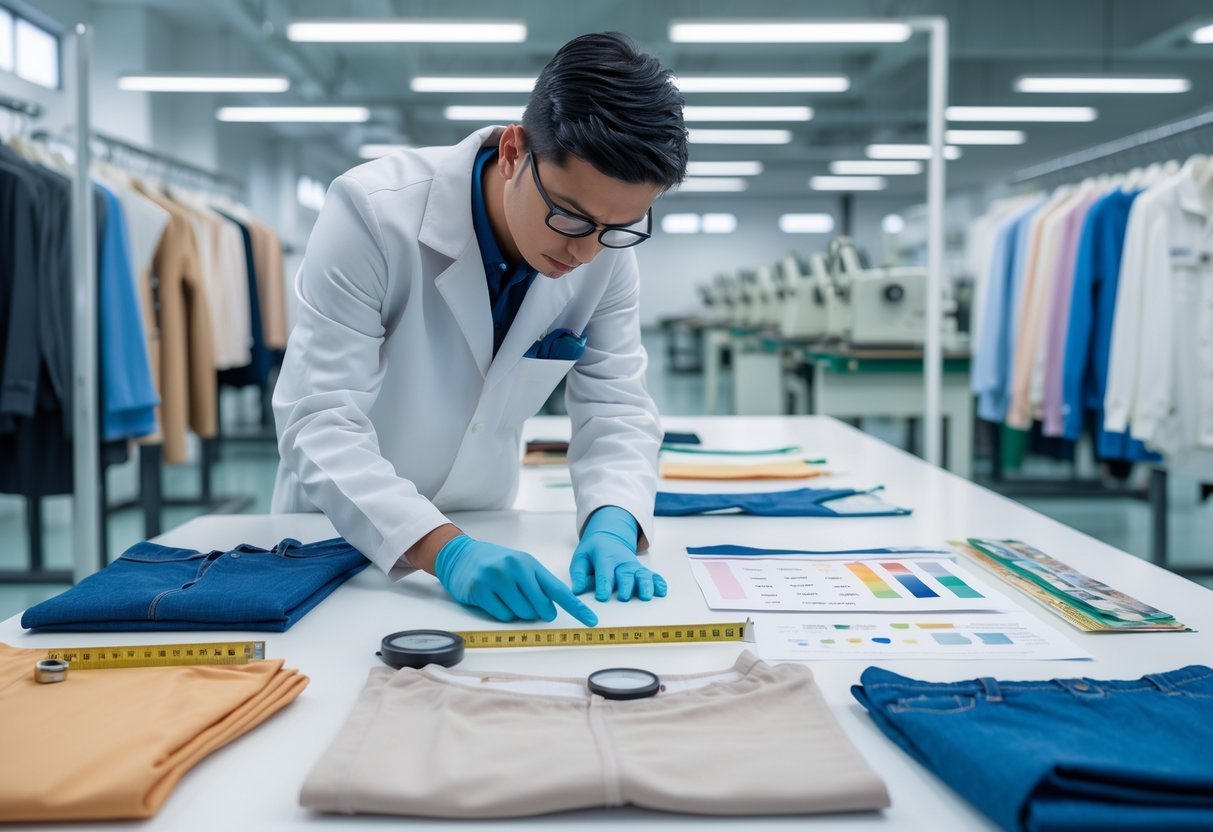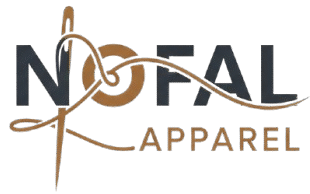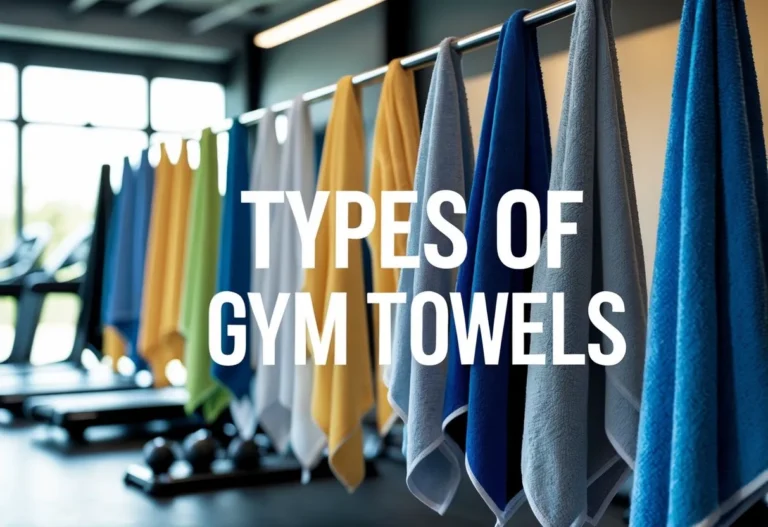Clothing quality control is essential for ensuring that garments meet the required standards before reaching customers. It involves checking every detail, from fabric and stitching to sizing and packaging, to prevent defects and maintain consistent quality. Effective quality control helps avoid costly mistakes and protects a brand’s reputation by guaranteeing products meet both regulatory and customer expectations.

This process includes specific checks like fit tests, color matching, and material inspections, making sure each item follows the brand’s specifications. Brands can use detailed checklists to communicate their standards clearly to manufacturers and inspectors, reducing errors during production. Consistent quality control across all suppliers also ensures uniformity in products, no matter where they are made.
By understanding and implementing thorough quality control practices, companies can deliver durable, well-made clothing that satisfies their customers and retains loyalty in a competitive market.
Key Takeways
- Quality control ensures garments meet set standards before shipment.
- Clear checklists help communicate quality expectations to manufacturers.
- Consistent inspections prevent defects and support brand reputation.
Understanding Clothing Quality Control

Clothing quality control involves detailed checks and measures throughout the garment production process. It aims to catch defects early, ensure garments meet required standards, and maintain consistency. This process affects the final product’s durability, appearance, and customer satisfaction.
Definition and Purpose
Quality control in clothing refers to the systematic inspection of garments during manufacturing. It focuses on identifying defects or irregularities in fabric, stitching, sizing, and finishing. The purpose is to make sure each item meets set standards before it reaches customers.
By applying tests and checks at different production stages, quality control reduces the risk of faulty or unsafe products entering the market. This process protects both manufacturers and consumers by ensuring the product is safe, durable, and consistent with brand claims.
Role in the Garment Industry
In the garment industry, quality control is vital to maintaining brand reputation and competitiveness. It involves inspecting raw materials, in-process garments, and finished products. These checks ensure the garment construction, fabric, and features match the approved design and standards.
The role of quality control extends beyond defect detection. It helps manufacturers identify issues early, reduce waste, and improve production efficiency. Many apparel businesses rely on quality control to meet international standards and regulatory requirements, making it essential in global supply chains.
Impact on Product Quality
Effective quality control directly improves product quality by preventing defective garments from reaching the customer. It ensures fabric consistency, correct sizing, strong seams, and proper functionality of features like zippers or buttons.
High-quality garments lead to increased customer satisfaction and brand loyalty. When products meet expectations for durability and appearance, the risk of returns and complaints decreases. Quality control also supports long-term business growth by building trust and minimizing costly recalls.
Quality Standards and Certifications

Clothing quality relies on clear standards and certifications that guide manufacturers to produce safe, durable, and consistent garments. These rules address how products must be made, tested, and labeled to meet industry needs and legal requirements.
Industry Quality Standards
Industry quality standards set the technical and performance benchmarks for fabrics, stitching, colorfastness, and overall garment durability. Organizations like the American Association of Textile Chemists and Colorists (AATCC) and the International Organization for Standardization (ISO) provide detailed testing methods and quality management guidelines.
Standards often cover:
- Fabric strength and wear resistance
- Colorfastness to washing and light
- Seams and construction quality
- Safety factors like flammability limits
Using these standards helps manufacturers maintain consistency and reduces defects in garments. They also support the use of Acceptable Quality Level (AQL) sampling, which defines how many defects are allowed in inspected batches before rejecting shipments.
Quality Certification Programs
Certification programs prove a garment or factory meets specific quality or sustainability benchmarks. Common certifications include:
- ISO 9001, which audits and certifies quality management systems.
- OEKO-TEX Standard 100, ensuring textiles are free of harmful substances.
- SA8000, which focuses on ethical labor practices alongside quality.
Brands use certifications to build trust with customers and retailers. Certifications often require regular audits and consistent documentation of quality control activities. This verifies that manufacturers maintain high standards throughout production, not just at the final stage.
Legal and Regulatory Compliance
Clothing manufacturers must meet laws governing safety, labeling, and materials to sell products globally. Common legal requirements include:
- Accurate fiber content labeling
- Care instructions and country of origin labels
- Safety rules such as flammability standards for children’s clothes
Failing to comply risks fines, product recalls, or bans from markets. Regular inspections and documentation under legal frameworks protect consumers and companies. Compliance also includes following regional standards, which may differ based on where products are sold, ensuring garments are both safe and truthful in their labeling.
Stages of the Quality Control Process

The quality control process in garment manufacturing is divided into clear stages that ensure each piece meets strict standards. It begins with careful checks before production starts, continues with inspections during making, and ends with a final review after garments are finished.
Pre-Production Quality Control
The pre-production stage focuses on design and materials. It starts with reviewing design samples to confirm fit, style, and functionality. Material selection is critical, involving tests for color fastness, shrinkage, and strength to ensure fabric durability and comfort.
Samples or prototypes are made and closely inspected. These samples must meet the specifications set by designers and clients before mass production can begin. This stage helps prevent costly defects later and ensures smooth workflow during production.
Production Quality Control
During production, the process includes continuous monitoring and inspections. Real-time checks on the sewing and assembly lines identify defects quickly before they multiply. Operators receive immediate feedback to correct problems.
Standard operating procedures guide every step, and workers are trained to follow set quality criteria. Regular line inspections maintain consistent quality, reducing variations caused by human error. This active control helps produce garments that match the approved samples.
Post-Production Quality Control
After garments are finished, a Final Random Inspection (FRI) assesses appearance, stitching, and measurements. Packaging and label checks ensure accurate information and compliance with rules.
The finished garment is tested for regulatory compliance, including safety and environmental standards. This stage confirms that the product is ready for shipment and meets customer expectations before delivery.
Key Quality Control Checks and Inspections

Effective quality control in clothing ensures defects are caught early and products meet standards. It involves detailed checks of raw materials, ongoing monitoring during production, and thorough final garment inspections.
Fabric Inspection and Defect Identification
Fabric inspection is the first critical step in quality control. Inspectors check for visible defects like holes, stains, color inconsistencies, and weaving flaws. They measure fabric weight (GSM) and test colorfastness to avoid fading or bleeding later.
Dimensional stability tests ensure fabrics do not shrink more than the allowed 3-5%. Fiber composition is also confirmed to match product requirements. Early detection prevents defective fabric from entering production, reducing waste and costly rework.
In-Line and Production Inspections
During manufacturing, in-line inspections monitor sewing, stitching, and assembly. Inspectors look for seam slippage, stitch density (often 7-12 stitches per inch), and loose threads. Continuous checks ensure consistency and catch defects such as skipped stitches or puckering before garments are completed.
Assembly sequence verification confirms parts like buttons, zippers, and labels are correctly placed. Needle detection machines scan for metal contaminants, crucial for safety and quality assurance.
Final Garment Inspection
The last step is a detailed finished garment inspection. Inspectors verify size, shape, and pattern accuracy, checking for consistent measurements across batches. They also assess seam strength, label accuracy, and garment appearance.
Defects like loose threads, faulty fasteners, or color mismatches lead to rejections. Sampling follows a specific Acceptable Quality Level (AQL) to decide batch acceptance or rejection, ensuring only quality products reach customers.
Clothing Quality Control Checklist Essentials

Effective quality control focuses on precise measurements, fabric durability, and correct labeling. Each step ensures garments meet industry standards and customer expectations. Thorough checks reduce returns and protect brand reputation.
Product Specifications and Measurements
Accurate sizing is a critical part of quality control. Each garment must match the size specifications exactly to ensure proper fit. Inspectors measure key areas like chest, waist, sleeve length, and inseam using calibrated tools.
Tolerance levels for measurements should be predefined, often within ±1 cm. This helps maintain consistency across all sizes. Live fit testing on models or dress forms confirms that measurements translate well to real wear.
Size grading between different sizes (S, M, L, XL) must also be checked. Consistent scaling prevents confusion and dissatisfaction for customers. Accurate specifications reduce returns and maintain trust in the brand.
Testing for Durability and Colorfastness
Fabric testing is essential to guarantee long-lasting performance. Shrinkage tests involve washing samples according to care instructions to measure fabric changes after laundering.
Colorfastness checks prevent dye from fading or bleeding under light, water, or sweat exposure. This protects the garment’s look and maintains customer satisfaction. Resistance to pilling is tested to ensure fabric surface stays smooth.
Physical feel of the fabric must also be evaluated. It should match the expected texture and comfort for the product type. Durable fabrics reduce defects and extend garment life.
Labeling and Packaging Checks
Labels must show accurate information, including size, fabric content, country of origin, and care instructions. Incorrect labels can cause legal issues or delays in customs clearance.
Placement matters. Labels need to be sewn or heat-pressed in specific spots to avoid irritation and maintain appearance. Durability is tested to ensure labels withstand washing without fading or detaching.
Packaging is reviewed for cleanliness and integrity. Barcodes and tags should be scanned for SKU and price accuracy before shipment. Proper packaging protects garments during transport and creates a positive buyer experience.
Common Defects and Testing Procedures

Clothing quality control focuses on catching defects that affect garment appearance and function. Inspectors often look for problems with threads, stitching, seams, and finishing. They also perform tests to check durability and compliance with standards. These steps help ensure garments meet quality requirements before reaching customers.
Identifying Loose Threads and Seam Issues
Loose threads are small but common defects that can signal poor workmanship. Inspectors look carefully at seams and edges to spot threads sticking out or unraveling. These defects may cause further damage during wear or washing.
Seam issues such as seam slippage occur when fabrics pull apart at the stitch line. This is tested by applying pressure or stretching the fabric near the seam. If the seam opens easily or stitches break, it means weak seam strength. This can make clothing fail early and disappoint customers.
Loose threads and seam problems are documented as either minor or major defects depending on severity. They must be corrected to avoid product returns or damage to brand reputation.
Evaluating Stitching and Finishing Details
Stitching quality relates to evenness, tightness, and stitch type. Inspectors check if stitches are uniform and strong enough for the fabric type. Uneven stitches, skipped stitches, or loose stitches are signs of poor control.
Finishing details include hems, buttons, zippers, and labels. These must be securely attached and neatly placed. Misaligned prints or uneven hems also affect garment appeal.
During inspection, the garment is examined under good light to verify all details match specifications. Measurements like seam allowance width are checked using rulers or gauges. Proper finishing ensures the garment not only looks good but lasts through use.
Physical and Chemical Tests
Physical tests evaluate garment durability and function. Common tests include:
- Seam slippage test: Measures fabric resistance to seams pulling apart under stress.
- Stretch test: Checks elasticity and fabric recovery after stretching.
- Abrasion resistance test: Simulates wear and rubbing to see if fabric pills or tears.
- Shrinkage test: Measures size change after washing.
Chemical tests verify colorfastness and fabric safety. These include testing for harmful substances and dyes that might cause allergies or damage.
Combining these tests with visual inspections helps ensure garments meet safety and performance standards required by brands and regulations.
Best Practices and Strategies for Garment Quality Assurance

Effective garment quality assurance relies on precise methods to reduce mistakes, regularly improve processes, and satisfy customers. These steps help maintain consistent standards and build trust in apparel products.
Minimizing Human Error
Human error is a common challenge in apparel quality assurance. To reduce mistakes, manufacturers should use clear, standardized procedures that workers can easily follow. Training staff thoroughly on quality standards and inspection methods is essential. This helps employees recognize defects early and avoid missed faults.
Automation tools like digital measuring devices and barcode scanning can also minimize errors. These tools reduce the reliance on manual checks and improve accuracy during production. Regular audits help uncover recurring errors and provide opportunities for correction. Combining technology with skilled workers strengthens overall quality control by limiting mistakes.
Continuous Improvement Processes
Adopting a continuous improvement mindset boosts garment quality over time. This involves collecting defect data during inspections and analyzing it to identify problem areas. Manufacturers should use this information to update procedures, train staff again, and adjust machinery or materials if needed.
Regularly reviewing each production stage—from fabric inspection to final packaging—helps catch issues early. Implementing small incremental changes can reduce waste and increase efficiency. This process encourages accountability at every level, ensuring that quality assurance evolves with production demands and industry standards.
Enhancing Customer Satisfaction
Customer satisfaction depends heavily on consistent garment quality. Meeting size, fit, and material expectations leads to repeat purchases and positive brand reputation. Quality assurance should focus not only on technical standards but also on delivering a product that performs well in daily use.
Thorough pre-production checks, in-process monitoring, and final inspections prevent defective garments from reaching customers. Clear labeling with care instructions supports longer garment life. Listening to customer feedback helps manufacturers identify areas to improve and innovate. High-quality apparel strengthens trust and builds strong customer relationships.
Frequently Asked Questions
Fabric quality is measured by its texture, strength, and uniformity. Other key factors include weight, stretch, and resistance to pilling.
What are the key factors to assess in fabric quality?
They check for consistent texture and color throughout the fabric. Strength tests determine if the fabric can withstand wear and tear. Stretch and recovery are also tested to confirm flexibility without damage.
How does stitch density affect the durability of clothing?
Higher stitch density means closer and more stitches per inch. This makes seams stronger and less likely to unravel. Low stitch density can cause seams to weaken or split with use.
What methods are commonly used for colorfastness testing?
They use washing tests to see if colors bleed or fade after laundering. There are also light exposure tests to check for fading when exposed to sunlight. Sweat and rubbing tests assess if colors transfer or bleed onto other fabrics.
How are zippers and buttons evaluated for quality assurance?
Zippers are tested for smooth operation and resistance to breaking or jamming. Buttons are checked to ensure they are securely attached and not prone to falling off. Both are inspected for material strength and proper function.
What criteria define the quality of seams and hems in garments?
Seams must be straight, tight, and without loose threads. Hems should be even and properly finished to prevent fraying. Inspectors look for consistent stitching and proper alignment with garment patterns.
Which international standards are applied in clothing quality control?
Standards from organizations like ISO guide overall quality management. AATCC provides textile-specific testing methods. These standards ensure safety, performance, and consistent measurements across different products and markets.






